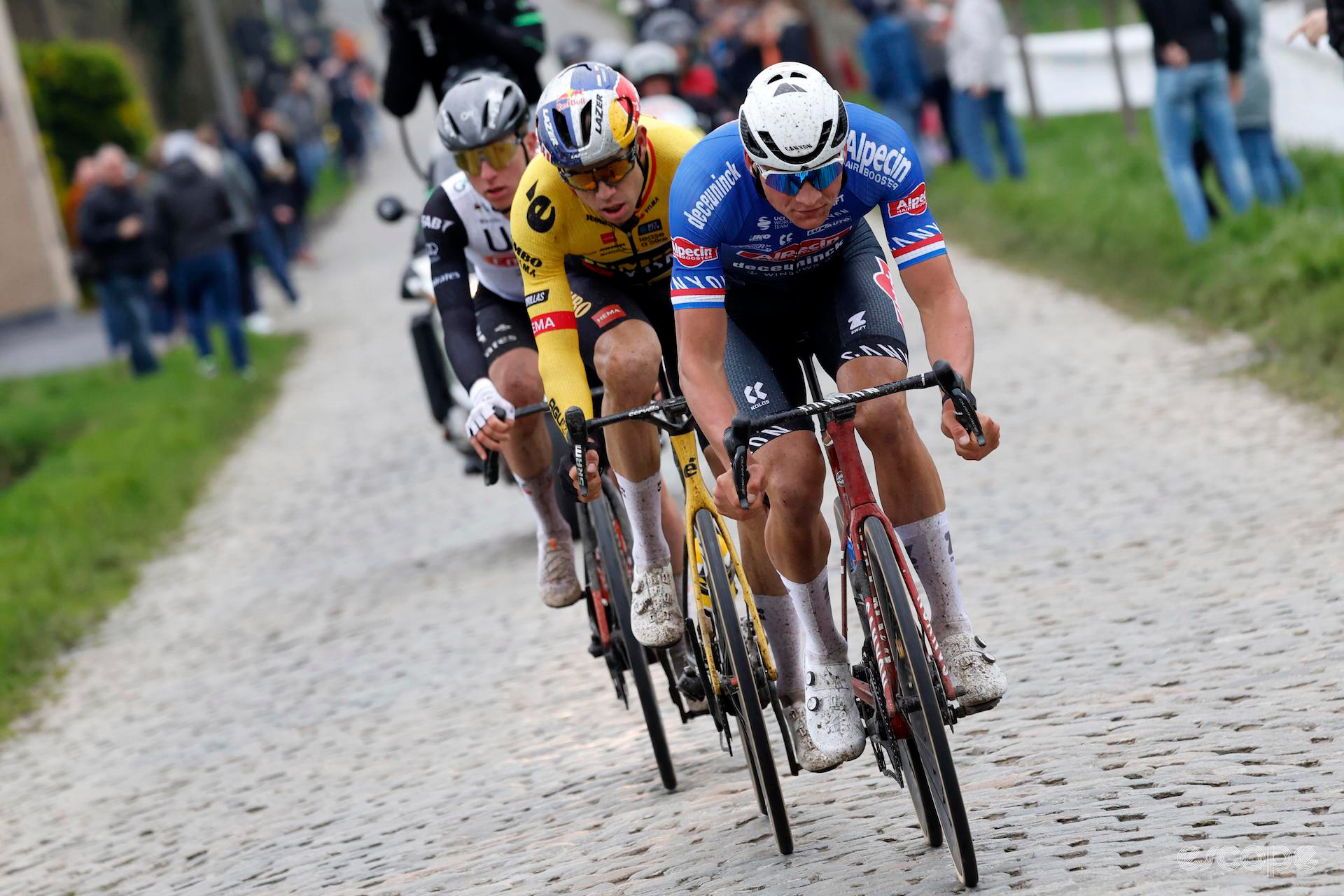A short memory sometimes seems endemic in those of us who ride and watch bike races. It’s easy to say ‘best Tour de France ever!’ or ‘I’m never doing that again’ in the heat of the moment, but a race like the 2023 Tour of Flanders probably earns its place among the best editions in the modern era.
Everyone expected it to be fought out by ‘The Big Three’: Mathieu van der Poel, Wout van Aert and Tadej Pogačar, and though in the end it followed something of a formula – at least where Pogačar was concerned – the first half of the race was far from predictable, and even opened up the idea of a big upset.
In a race of such drama from start to finish, it’s hard to narrow down the key moments. Here are just some of those that stood out amid the chaos.
A frantic chase
Long before the race reached the first cobbles, there was drama in the peloton as Van der Poel found himself off the back in a large group caught out in the crosswinds.
They were still in the first hour of racing and the defending champion was alongside a handful of Alpecin-Deceuninck teammates, most of Israel-Premier Tech, and a number of Jayco-AlUla, Bora-Hansgrohe, Lotto Dstny and Groupama-FDJ riders, including last year’s third-place finisher Valentin Madouas who would soon climb off due to sickness.
With more than 230 kilometres left to race, the main bunch didn’t seem too interested in putting a big favourite out of the race once and for all. But it was still aggressive at the front with a breakaway yet to go clear, not to mention the wind.
So Alpecin-Deceuninck was forced to chase, and chase hard.
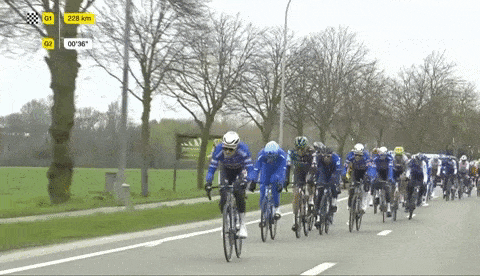
Though their disadvantage exceeded 40 seconds in the most anxious moments, Søren Kragh Andersen and Silvan Dillier were able, almost without help, to bring their leader back into the fold. That was something Van der Poel later felt compelled to apologise for.
“I like to race from the back in the beginning,” Van der Poel admitted after the finish. “I know it sometimes involves risks, but I had no idea that [the peloton] was going to tear. However, it did and my teammates almost had to sacrifice themselves to bring me back.
“I do want to apologise for that. I didn’t lose much strength myself, I was well protected from the wind, but I did seriously hurt my teammates.”
The late breakaway
After two breathless hours of racing, a breakaway finally went clear, and few were more delighted than Alpecin-Deceuninck.
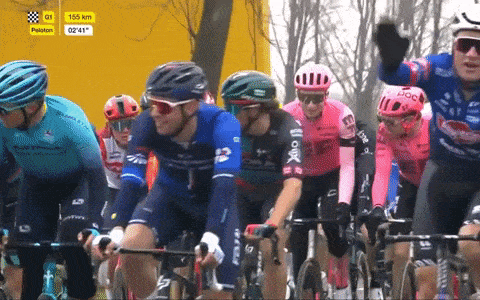
The delay in their escape did however mean that a few bigger names were also let slip, Jasper De Buyst (Lotto Dstny), Tim Merlier (Soudal Quick-Step), Jonas Rutsch (EF Education-EasyPost) and Hugo Houle (Israel-Premier Tech) bridging across after a few kilometres.
A brief lull
There was a well-earned easing in effort once the break went clear, but the bunch didn’t have long to wait before the first cobbles and climbs of the day. The pace continued to fluctuate between steady and almost a standstill until the gap was out over six minutes.

Cobbled chaos
Once onto the bergs and cobbles in the hills around Oudenaarde, the race definitively entered a new phase. There were more splits, a few testing accelerations, more desperate chasing – including for Van der Poel, again – and one or two very nasty crashes as the stress levels began to rise in the bunch.
And then, with the gap brought tumbling beneath three minutes, the Tour of Flanders peloton reached the Molenberg where 2021 winner Kasper Asgreen put the hammer down, drawing out an elite chase group.

The Soudal Quick-Step rider looked fresher and stronger than he has all spring, and in the company of Mads Pedersen (Trek-Segafredo), Florian Vermeersch (Lotto Dstny), Stefan Küng (Groupama-FDJ), Neilson Powless (EF Education-EasyPost), Nathan van Hooydonck (Jumbo-Visma), Fred Wright (Bahrain Victorious) and Pogačar’s UAE teammate Matteo Trentin among others, they made a dangerous counter-move with 100km to go.
They soon bridged to the front of the race, and here was the glimpse of hope for anyone cheering for an underdog, i.e. any of the remaining 172 riders not included in the ‘Big Three’.
UAE lays down the law on the Oude Kwaremont
The race entered a holding pattern until another high speed crash allowed the elastic to stretch a little, but the Kwaremont was beginning to loom large for the second time. And this is where UAE Team Emirates unleashed Pogačar.
As the breakaway splintered up ahead, all attention turned to the peloton where Mikkel Bjerg was delivering a one-minute sprint effort to punish the bunch. When he swung off, Rui Oliveira took over for his own damaging effort and then it was Pogačar’s turn.
Magnus Sheffield and Tom Pidcock (Ineos Grenadiers) were on his wheel – at first – while Van Aert and Van der Poel had work to do to leapfrog from several positions back.

Pogačar was alone for a short while, speeding between the front of the race and an elite chase of Van der Poel, Pidcock, Van Aert and his Jumbo-Visma teammate Christophe Laporte.
The young Slovenian was brought back but he was unbowed. He’d learned something from his first big effort on the Kwaremont, and it would not be his last.
The blows kept coming.
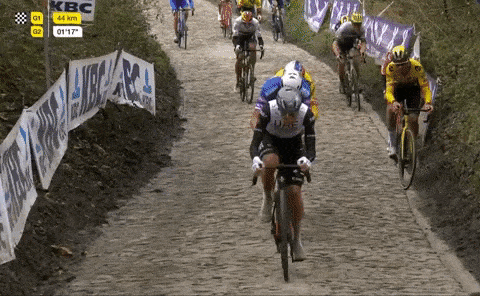
The ‘Big Three’ is reduced to two…
The trio of favourites gradually jettisoned the dead wood in their group until it was just the three of them left and a 40-second gap to close with about 20 km to the last ascent of the Kwaremont.
And there was no waiting around.
Shortly after a nervous moment at the foot of the Taaienberg, Van der Poel put his rivals to the test, and though Pogačar passed with flying colours, Van Aert faltered.
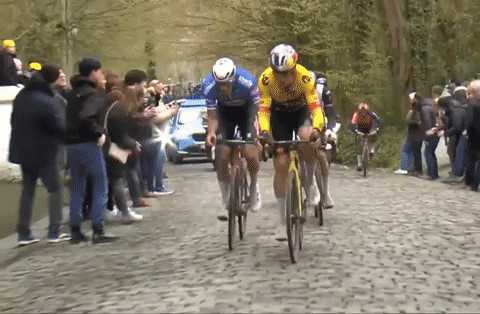
Van Aert had a furious chase on his hands, but his struggle continued. Van Hooydonck dropped back from the lead group and eventually helped his leader gain contact, but Pogačar and Van der Poel were already on the move.
Three became two.
Two becomes one
Sensing the danger bearing down on them, Pedersen had pushed on from the ailing lead group with 30 km to go and still held a slender margin at the foot of the Kwaremont, but Pogačar was on his case.
This time Van der Poel couldn’t follow when the double Tour de France champion put the hammer down on the iconic cobbled climb.
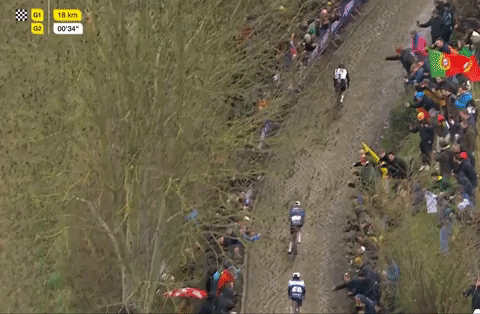
Pogačar glided up the slimy cobbles as if it was a freshly paved mountain pass, and when he flew past Pedersen over the top, he finally arrived where he knew he needed to be if he was to win:
Solo at the Tour of Flanders.

He had one cobbled climb to go, the Paterberg, but it was no trouble for the wiry Slovenian. What might have been his downfall was the flat run-in to Oudenaarde, and the 15-second advantage he had over lone chaser Van der Poel was maybe a little precarious with 13 flat kilometres to go, but he didn’t just maintain his margin, he increased it, right up until the finishing straight where he allowed himself to enjoy his fourth Monument victory – only Paris-Roubaix and Milan-San Remo to tick off…

Van der Poel eventually zigzagged across the line 16 seconds in arrears and Pedersen just edged out Van Aert in the sprint for the podium from what remained of the group.
What did you think of this story?
